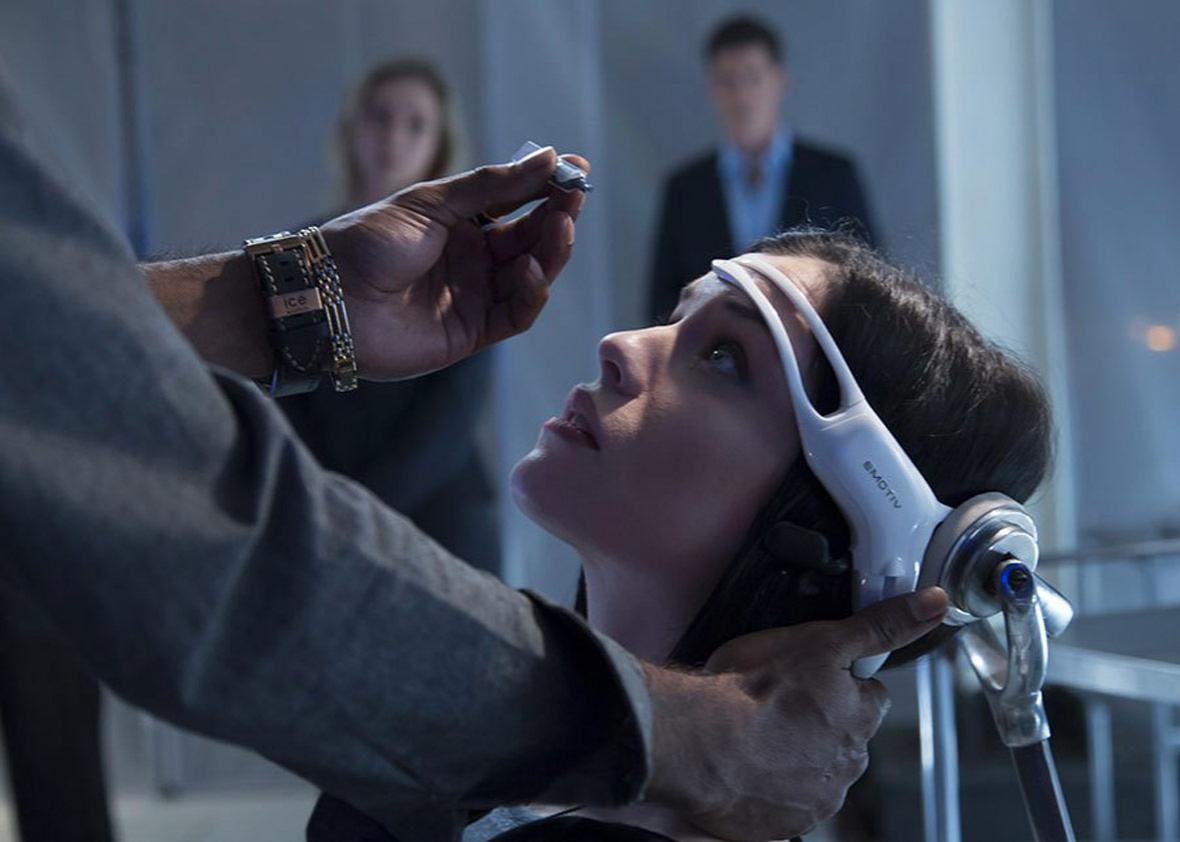A tech innovator develops biological software that conjures a virtual reality in one’s mind, partly in the hopes of reviving her brother, who has been held in a comalike state. But the software, which is really a sophisticated drug, can be extremely addictive and socially isolating—and the government has its own designs to use it for virtual imprisonment.
That’s the idea behind OtherLife, a new indie sci-fi movie that had its North American premiere at the San Diego Film Festival in October and recently came out on Netflix. It highlights beneficial applications, risks, and ethical conundrums of virtual reality, including its misuse or excessive use, in a possible not-too-distant future. “If the brain doesn’t really know the difference in a chemical sense between what we consider a real or an unreal experience, then if we seek fulfillment and satisfaction and comfort and engagement with that, then what are the implications?” asks Kelley Eskridge, who wrote both OtherLife and the novel Solitaire, on which the movie is loosely based.
OtherLife joins a long tradition of films to explore the addictive potential of virtual reality. Back in the ’90s, there was a virtual reality boom—not unlike the one we’re seeing today—and the hype was reflected on the screen with movies like The Lawnmower Man, Strange Days, The Matrix, and eXistenZ, as well as a Star Trek TV series. In many cases, these stories focused on how VR could cut people off from the world. Only in some stories would they eventually struggle to find their way back.
For instance, after a character in a 1998 Star Trek: Deep Space Nine episode loses his leg in battle, he suffers phantom pain, flashbacks, and other post-traumatic stress disorder symptoms, which his counselor encourages him to treat in the “holodeck,” a futuristic VR environment. He starts to improve, but he spends more and more time on VR surrounded by virtual friends while his real relationships deteriorate. After his real friends and colleagues confront him and shut down the program, he realizes the extent of his trauma—and that it will take time for him to recover.
In the 1995 movie Strange Days, the main character, played by Ralph Fiennes, is a dealer of illegal SQUID discs—first-person point-of-view scenarios that people can watch, à la virtual reality. But the devices are outlawed because they can be used to “play back” scenes from another person’s life without their permission, and because of the risk of addiction—users who “jack in” are like drug users. The ban doesn’t work, however, creating a black market on which users buy new experiences. Fiennes’ character uses them himself, seeking to escape his reality and struggling relationships by immersing himself in a virtual reality of his past, when times were better.
But is VR addiction really something we need to worry about now? Currently, eye strain, cybersickness, and a lack of sense of touch in VR make it far less immersive than portrayed in sci-fi. You can’t yet plug in for hours and hours. “It’s not at a holodeck level yet. I don’t think you’re seeing a public health challenge,” says Albert “Skip” Rizzo, director of medical virtual reality at USC’s Institute for Creative Technologies. In fact, experts have been speculating and researching how VR technologies could be used to treat addiction. For example, alcoholics immersed in a virtual bar or a virtual party can be taught to manage their cravings and develop coping and refusal skills so that they can prevent a relapse when they’re near the real thing.
With each technological advance, critics and public health advocates raise concerns, which may be legitimate or exaggerated depending on one’s perspective. Where kids’ time spent fixated on television screens once alarmed their parents, now smartphone screen time and social media perform that function. Each time, people worried about tech alienating people and contributing to social isolation. In the 2000s, for example, some people feared it would become all too easy to send an email or a text rather than to call a friend or visit them in person. “It’s the same age-old question that everyone’s asked: Is the internet addictive? Are video games addictive? Can your cellphone be addictive?” says Patrick Bordnick, a behavioral scientist and dean of Tulane University’s School of Social Work. These diagnoses are controversial, but obsessive behavior around anything can damage a person’s life. Ultimately, most people find ways to adapt to these technologies and sometimes use them to increase, rather than reduce, their social connectedness.
Nevertheless, scientists are studying the risks of immersive VR with lab rats, for whom they’ve specifically designed little VR-style devices. Mayank Mehta, a neurophysicist at UCLA, and his colleagues are looking for changes in the hippocampus, the part of the brain involved in making memories and in Alzheimer’s disease, PTSD, and epilepsy. They have set up a realistic virtual world for the rodents to explore, including a maze and a dispenser of sugar water—they’re drawn to sweetened beverages as much as humans are. The rat’s eyes and ears tell it when it’s nearing the reward zone, and it salivates as it pads its virtual feet toward the virtual soda fountain. “It starts licking before it get the reward—that’s the sign of addiction. We can now create reward anticipation entirely with virtual images,” Mehta says.
But just as VR helps doctors and therapists sever patients’ connections between an experience they’re addicted to and their pleasurable response, it may create new links elsewhere. “Neurons that are wired together fire together,” Mehta says, “and we’re trying to figure out if VR is rewiring the brain.”
If that’s happening, it’ll confirm what we’ve seen from Hollywood for decades: For better or worse, when you change your reality, you change yourself.
This article is part of Future Tense, a collaboration among Arizona State University, New America, and Slate. Future Tense explores the ways emerging technologies affect society, policy, and culture. To read more, follow us on Twitter and sign up for our weekly newsletter.
